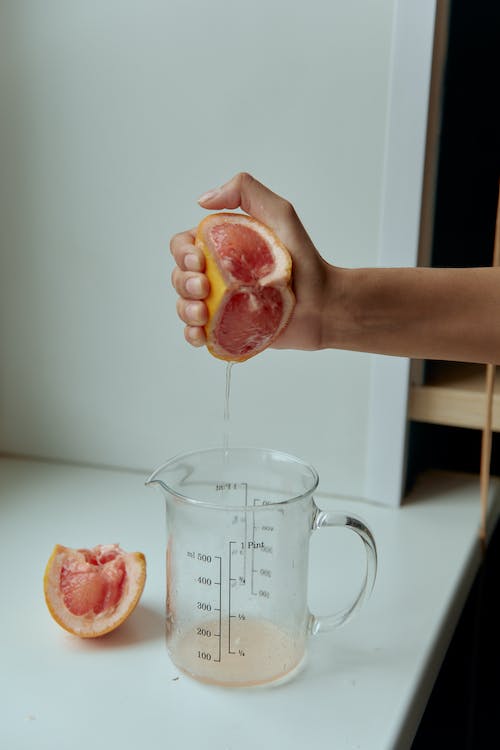Nurturing Feminine Wellness - Embracing Vaginal Health
Did you know that 75 out of 100 women experience discharge? In the intricate symphony of women’s health, one topic often whispered about is vaginal discharge. As advocates for sustainable, plastic-free hygiene solutions, we’re not just about products – we’re about empowerment through understanding. Join us on an enlightening journey as we demystify vaginal discharge, delve into its intricacies, and explore how our eco-friendly underwear harmonizes with your holistic well-being.

What is Vaginal Discharge?
Is Vaginal Discharge Normal?
Absolutely. It’s your body’s way of whispering its secrets. Normal discharge is a sign of a well-balanced vagina, a reflection of your body’s remarkable self-care. So don’t worry if you’re surprised by discharge.
Why Do Women Experience Vaginal Discharge?
Imagine your body as a conductor, guiding hormonal melodies. Discharge changes with your menstrual cycle, dancing to the rhythm of hormonal symphonies.
When Does Vaginal Discharge Indicate a Problem?
Yet, like any composition, some notes might sound off-key. If your discharge suddenly changes – an unusual scent, an unexpected hue – it might be a signal of infection. That’s when it’s important to pause and seek professional advice.
Understanding the Different Types of Vaginal Discharge
Throughout your menstrual cycle, vaginal discharge changes its tune:
- White and Creamy: A normal overture, commonly observed at the cycle’s beginning and end.
- Clear and Slippery: Often accompanies ovulation, signaling your highest fertility.
- Thin and Watery: Occurs as a prelude to and during periods.
- Thick and Sticky: Follows periods, usually during non-fertile times.
The Connection Between Discharge and Infections
Occasionally, uninvited guests disrupt the symphony – infections like yeast or bacterial vaginosis. They alter the harmony, changing notes. Seeking guidance from healthcare professionals ensures the melody stays pure.
Facts and Figures - Shared Experiences
Out of every 100 women, about 75 find themselves in sync with this natural rhythm. This shared experience reminds us that we’re part of a global symphony, each note contributing to the melody of womanhood. It’s a powerful reminder that our bodies are beautifully diverse and ever-evolving.
Furthermore, around 5-10% of women contend with recurrent yeast infections. This means that for every 100 women, approximately 5 to 10 navigate the unique challenges posed by these infections.
What can you do about discharge?
As we journey deeper into the realm of vaginal health, it’s essential to explore how to manage and maintain a harmonious balance, particularly when it comes to vaginal discharge. Understanding your body’s cues and making informed choices can empower you to navigate this natural process with confidence and comfort.
1. Embrace Hygiene Best Practices:
Maintaining proper hygiene is fundamental. Opt for gentle, unscented soaps when cleansing the vaginal area. Avoid douching, as it disrupts the natural balance of vaginal flora. Opt for breathable, sustainable underwear that is plastic free, to help prevent moisture buildup. Often, disposable products contain plastic that encourage bacteria growth and odors. The best microbial balance is to get rid of any synthetic ingredients that get in touch with your intimate area. The more natural, the better you will feel.
2. Understand Your Cycle:
The different types of vaginal discharge are like chapters in your body’s book. Familiarize yourself with the normal variations throughout your menstrual cycle. This understanding helps you recognize when something might be amiss.
3. Seek Professional Insight:
If you notice significant changes in discharge, such as an unusual color, odor, or consistency, it’s wise to consult a healthcare provider. Self-diagnosis might lead down the wrong path, so trust the guidance of professionals who can accurately assess your situation.
4. Mind Your Diet:
Your diet plays a vital role in vaginal health. Opt for a balanced diet rich in fruits, vegetables, whole grains, lean proteins, and healthy fats. Limit sugar and processed foods, as they can disrupt vaginal flora.
Nurturing Vaginal Health Through Nutrition - What to Include
- Fruits and Vegetables: Rich in antioxidants and vitamins, these powerhouses contribute to overall wellness. Berries, citrus fruits, leafy greens, and cruciferous vegetables are particularly beneficial.
- Whole Grains: Opt for whole grains like quinoa, brown rice, and whole wheat, which provide fiber and sustained energy, supporting hormonal balance.
- Lean Proteins: Incorporate lean sources of protein such as poultry, fish, beans, lentils, and tofu. Protein is essential for tissue repair and immune function.
- Healthy Fats: Include sources of healthy fats like avocados, nuts, seeds, and olive oil. These fats aid in hormone production and absorption of fat-soluble vitamins.
- Probiotic-Rich Foods: Cultured foods like yogurt, kefir, and fermented vegetables contain beneficial bacteria that contribute to a healthy gut – a key player in maintaining vaginal health.

What to Limit or Avoid - Fine-Tuning the Harmony
While a balanced diet lays the foundation for well-being, some elements might disrupt the symphony. It’s prudent to be mindful of certain foods that could impact vaginal health:
- Excessive Sugar: High sugar intake can disrupt the balance of vaginal flora, potentially leading to yeast overgrowth. Limit sugary snacks and drinks.
- Processed Foods: Highly processed foods often lack nutrients and fiber. They can contribute to inflammation and hormonal imbalances, affecting vaginal health.
- Dairy Products: While dairy is a source of calcium, some women find that excessive dairy consumption can lead to increased vaginal discharge or discomfort. Opt for alternatives like almond or coconut milk.
5. Stay Hydrated:
Adequate hydration supports overall well-being, including vaginal health. Drinking enough water helps maintain optimal fluid balance in your body, contributing to a healthy vaginal environment.
6. Manage Stress:
Stress can alter hormonal balance, impacting vaginal health. Engage in stress-reducing activities such as mindfulness, yoga, deep breathing, or meditation to keep your body’s harmony intact.
7. Be Mindful of Medications:
Some medications, particularly antibiotics, can disrupt the balance of vaginal flora. If you’re prescribed antibiotics, discuss with your healthcare provider if any additional measures are necessary to maintain vaginal health.
8. Stay Informed:
Empowerment begins with knowledge. Continue learning about your body, its changes, and the options available to you. This understanding is your strongest ally in maintaining a healthy vaginal balance.
9. Prioritize Self-Care:
Above all, remember that self-care is the cornerstone of well-being. Listen to your body, honor its needs, and make choices that resonate with your holistic health journey.

Maintaining Balance - A Holistic Approach
Remember, achieving balance extends beyond just diet. Regular physical activity, adequate hydration, and effective stress management are crucial notes in the symphony of holistic well-being. Your body’s composition is unique, and understanding its needs empowers you to make informed choices. Incorporating a balanced diet into your lifestyle isn’t about strict limitations; it’s about nourishing yourself with intention. By embracing a spectrum of nutrients and being mindful of potential disruptors, you’re fostering a harmonious environment where your body’s symphony can resonate.
Conclusion - Celebrating Wellness's Harmonic Ensemble
Your body is an intricate composition – a symphony of grace and resilience. Embrace every note, from soft whispers to soaring crescendos. As you embark on this journey to holistic well-being, our sustainable, plastic-free hygiene underwear stands with you, a testament to your unique melody, nurturing the marvel that is you.




